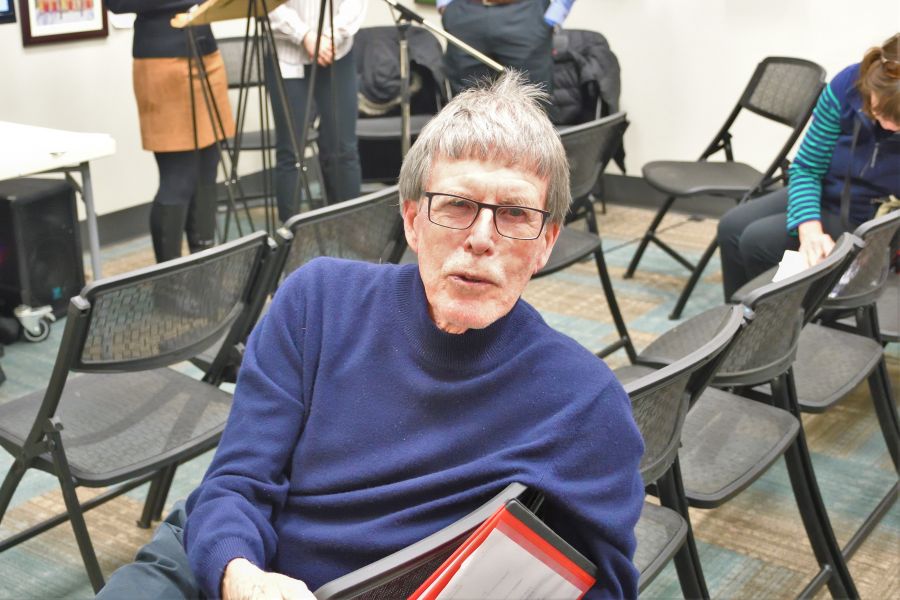The nature of the consciousness and awareness remain what Winston Churchill so aptly described in a very different context, a “riddle wrapped in a mystery inside an enigma.”
But as mysterious as both may be in the minds of philosophers, neuroscientists such as Francis Crick and Oliver Sachs and the odd physicist, including Erwin Schrodinger and the 2020 Nobel Prize winner in physics, Roger Penrose – a more profitable way for me to tackle their nature is to begin with what I’m aware of now as I write this and some illustrative clinical cases.
Fortunately, we’re aware of the tiniest fraction of what’s going on within and around us at any given moment.
For example, as I write this, I’m aware of little more than my left hand steadying the pad of paper before me, while the black ballpoint pen in my right hand creates strings of words across the page, a vague sense of reading what I’ve just written and sometimes periodic pauses to think before moving on.
But for the rest – the familiar humdrum background sounds from the fireplace, the workings of my innards as they go about their business of keeping me and my brain alive – I’m mercifully unaware.
Except of course for the occasional shenanigans of squirrels that sometimes catch my attention. It’s an example of selective attention and just how capable the brain is at focusing on the interest at hand, while ignoring the rest.
Sometimes, we’re unaware for other reasons. My father was unaware of his left face, arm and leg following an ischemic stroke, which involved his right (non-dominant) hemisphere in the parietal region.
There was no weakness or trouble walking except when he was faced one day with the need to climb over a low rail fence on a country walk. There was no trouble lifting his unaffected right leg over the fence first, but unaware of his left leg, and thus the need to lift it over the fence to move on, he was stuck, unable to go on and frustrated.
It was only when I pointed out that his left leg needed to be lifted over the fence that he was able to do so and move on.
When his attention was drawn to his left arm and leg, sensation was normal. But touched on both sides simultaneously, he always ignored the stimulus on the left side.
The same was true for his visual fields. Stimulated on both sides with my wiggling fingers, he ignored the fingers on the left side, but stimulated only on the left side, readily picked up the stimulus.
That’s an example of sensory extinction, to touch and sight, to simultaneous stimulation on both sides and an example of how lesions in the brain may distort our awareness.
Then there’s the matter of patients who survive severe brain injuries due to trauma, a major stroke or severe hypoxic brain injury. Some waken from their initial coma but fail to show any response to stimulation of any kind – a state aptly called “wakefulness without awareness.”
Or so it seemed despite many attempts to connect with these patients in some meaningful manner. Then teams at the universities of Cambridge and Liege assessed groups of these patients using functional MRI, a technique that measures cerebral blood in real-time.
The results were stunning. In response to instructions such as, imagine walking through familiar rooms in your home or swinging a tennis racquet at a ball or navigating your way through a familiar city, the brains of several patients, otherwise “unreachable” using conventional methods, lit up in the appropriate regions of their brains in a similar fashion to healthy controls.
The findings clearly showed that in some fashion, some of those patients were aware.
That was amazing and a startling example of how standard assessment techniques used in intensive care units and recovery rooms may miss awareness in patients.
In the United States similar observations were made using artificial intelligence to analyze the surface-recorded electrical activity of the brain in patients in response to similar types of stimulation.
These few examples highlight why the brain is such a challenging frontier for science. The brain contains roughly 100 billion nerve cells, many of which connect with many thousands of other local, regional and distant nerve cells, all of which makes the brain a formidable organ to study and understand.
The sheer complexity of the brain explains why, despite much effort by some very clever scientists, the physiological and anatomical basis of consciousness remains mysterious and will remain so for the foreseeable future.
Some scientists, such as Steven Weinberg, a Nobel laureate in physics, even suggest that understanding the brain may be beyond the cognitive reach of humanity. By the way, he felt the same way about some of the most challenging and intractable problems in physics.
He was probably right on both accounts.
Dr. William Brown is a professor of neurology at McMaster University and co-founder of the InfoHealth series at the Niagara-on-the-Lake Public Library.










